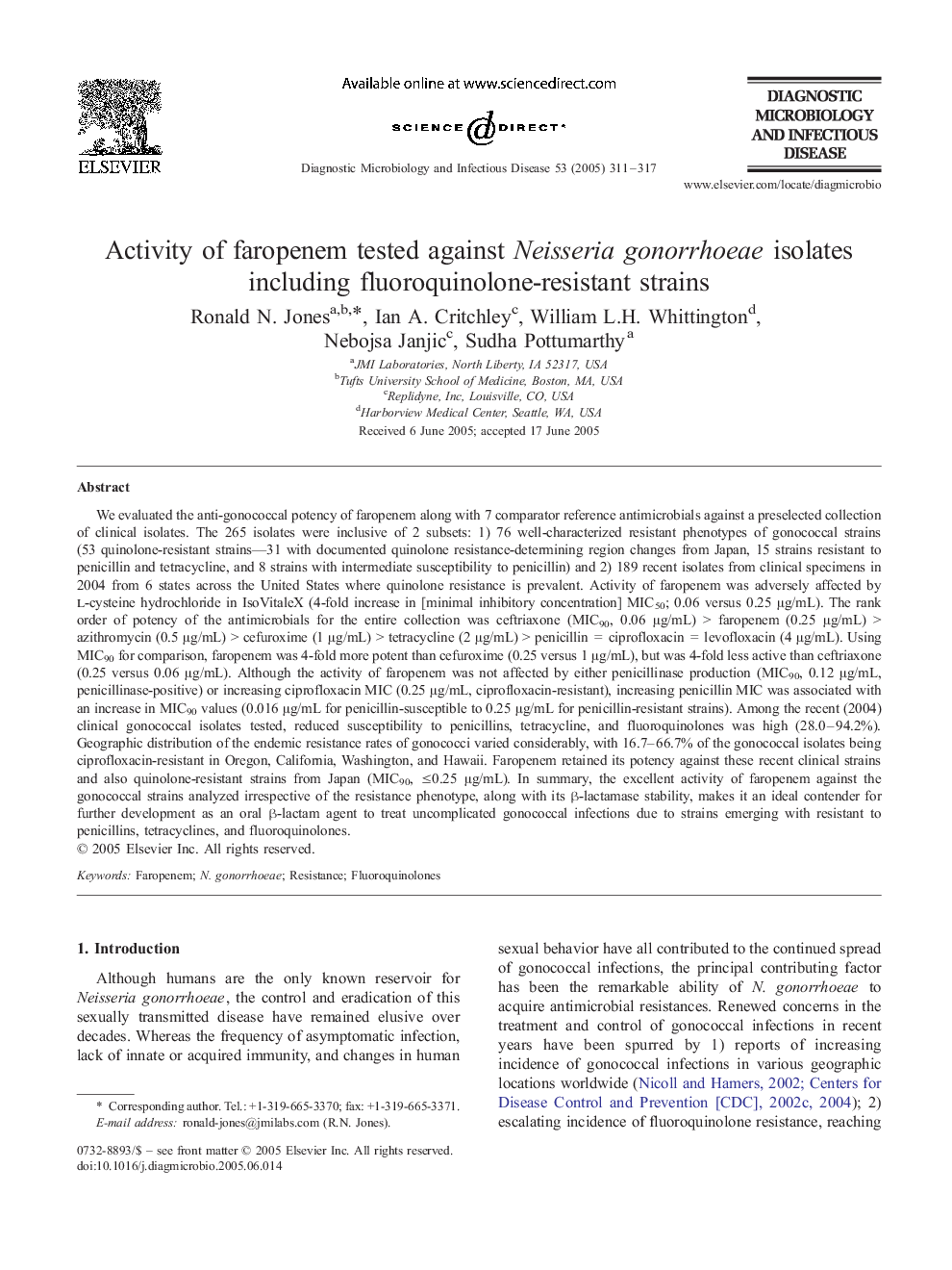| Article ID | Journal | Published Year | Pages | File Type |
|---|---|---|---|---|
| 9263273 | Diagnostic Microbiology and Infectious Disease | 2005 | 7 Pages |
Abstract
We evaluated the anti-gonococcal potency of faropenem along with 7 comparator reference antimicrobials against a preselected collection of clinical isolates. The 265 isolates were inclusive of 2 subsets: 1) 76 well-characterized resistant phenotypes of gonococcal strains (53 quinolone-resistant strains-31 with documented quinolone resistance-determining region changes from Japan, 15 strains resistant to penicillin and tetracycline, and 8 strains with intermediate susceptibility to penicillin) and 2) 189 recent isolates from clinical specimens in 2004 from 6 states across the United States where quinolone resistance is prevalent. Activity of faropenem was adversely affected by l-cysteine hydrochloride in IsoVitaleX (4-fold increase in [minimal inhibitory concentration] MIC50; 0.06 versus 0.25 μg/mL). The rank order of potency of the antimicrobials for the entire collection was ceftriaxone (MIC90, 0.06 μg/mL) > faropenem (0.25 μg/mL) > azithromycin (0.5 μg/mL) > cefuroxime (1 μg/mL) > tetracycline (2 μg/mL) > penicillin = ciprofloxacin = levofloxacin (4 μg/mL). Using MIC90 for comparison, faropenem was 4-fold more potent than cefuroxime (0.25 versus 1 μg/mL), but was 4-fold less active than ceftriaxone (0.25 versus 0.06 μg/mL). Although the activity of faropenem was not affected by either penicillinase production (MIC90, 0.12 μg/mL, penicillinase-positive) or increasing ciprofloxacin MIC (0.25 μg/mL, ciprofloxacin-resistant), increasing penicillin MIC was associated with an increase in MIC90 values (0.016 μg/mL for penicillin-susceptible to 0.25 μg/mL for penicillin-resistant strains). Among the recent (2004) clinical gonococcal isolates tested, reduced susceptibility to penicillins, tetracycline, and fluoroquinolones was high (28.0-94.2%). Geographic distribution of the endemic resistance rates of gonococci varied considerably, with 16.7-66.7% of the gonococcal isolates being ciprofloxacin-resistant in Oregon, California, Washington, and Hawaii. Faropenem retained its potency against these recent clinical strains and also quinolone-resistant strains from Japan (MIC90, â¤0.25 μg/mL). In summary, the excellent activity of faropenem against the gonococcal strains analyzed irrespective of the resistance phenotype, along with its β-lactamase stability, makes it an ideal contender for further development as an oral β-lactam agent to treat uncomplicated gonococcal infections due to strains emerging with resistant to penicillins, tetracyclines, and fluoroquinolones.
Related Topics
Life Sciences
Immunology and Microbiology
Applied Microbiology and Biotechnology
Authors
Ronald N. Jones, Ian A. Critchley, William L.H. Whittington, Nebojsa Janjic, Sudha Pottumarthy,
